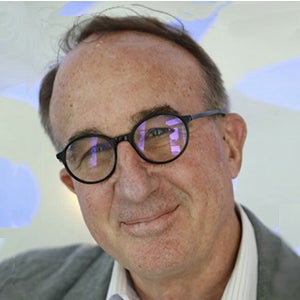By Robby Miller
This year the National Fragile X Foundation is celebrating its 40th anniversary! It’s hard to believe we have already spent 40 years serving the Fragile X community -families living with Fragile X, their loved ones, and professionals alike- and I think I speak for our entire team when I say we look forward to serving the community for the next 40 years (and more!). As a tribute to the organization’s rich history, we are cataloging our journey in monthly blog posts. We have so many people and institutions in our history it’s hard to capture them all, but we will certainly do our best. Join us as we walk down memory lane, memorializing how the National Fragile X Foundation got to where we are today so we can dream together of the brightest possible tomorrow.
– Hilary Rosselot
“The first decade was rocky!” said Dr. Randi Hagerman, co-founder of the NFXF. “There was a constant struggle for money!” According to Dr. Hagerman, the focus in the early years of the NFXF was to “get the word out!” During that time period, the inherited nature of Fragile X was not fully understood. However, early pioneers in the Fragile X world, such as Dr. Stephanie Sherman and Dr. Ted Brown, were steadily making progress in sorting out the genetics.
As an example of the efforts that Dr. Hagerman, the NFXF, and others were making to spread the word about Fragile X, Dr. Hagerman shared a story about “crashing” a meeting on X-linked intellectual disabilities that was taking place in Australia in 1985. Though she wasn’t invited, she made the decision to show up and join the meeting so that she could talk about Fragile X to the assembled X-linked experts! (There was also a similar meeting in Sicily in the late 80’s. This time, Dr. Hagerman was invited!)
In 1986, as a young and nervous post-doc, Dr. Sherman presented on Fragile X at an American Society of Human Genetics meeting – one of the first such Fragile X presentations to that group. This was at a time when there were still many questions about Fragile X since it didn’t seem to follow the established rules of X-linked inheritance. As a new Foundation, and as noted in last month’s blog post, Dr. Hagerman and other volunteers at the NFXF were doing their best to share presentations like Dr. Sherman’s with doctors and scientists throughout the world.
Dr. Sherman also recalls a 1987 Fragile X meeting organized by the NFXF that was one of the first occasions to bring families together with scientists — a tradition that the NFXF has maintained ever since! This was the meeting where, in a session on reproductive options, the scientists and clinicians began to sense that premature menopause, shared by many of the women in attendance, was somehow related to Fragile X. (And what is now a well-established fact and referred to as Fragile X-associated primary ovarian insufficiency, or FXPOI.) At the time, there was no idea that specific symptoms could be related to the premutation.
In next month’s 40th anniversary blog post, we’ll talk about how, in the 1990s, the NFXF began growing into a true national organization.
about

Robby Miller
Robby has spent over 50 years helping children with special needs, their families, and the professionals who work with them. Robby is particularly interested in how families learn about, access, and receive meaningful services from competent professionals, organizations, and institutions. This interest led to his co-founding the Fragile X Clinical & Research Consortium, also known as FXCRC. In his spare time, you’ll find Robby singing and playing rhythm guitar in a rock band with his pals.

